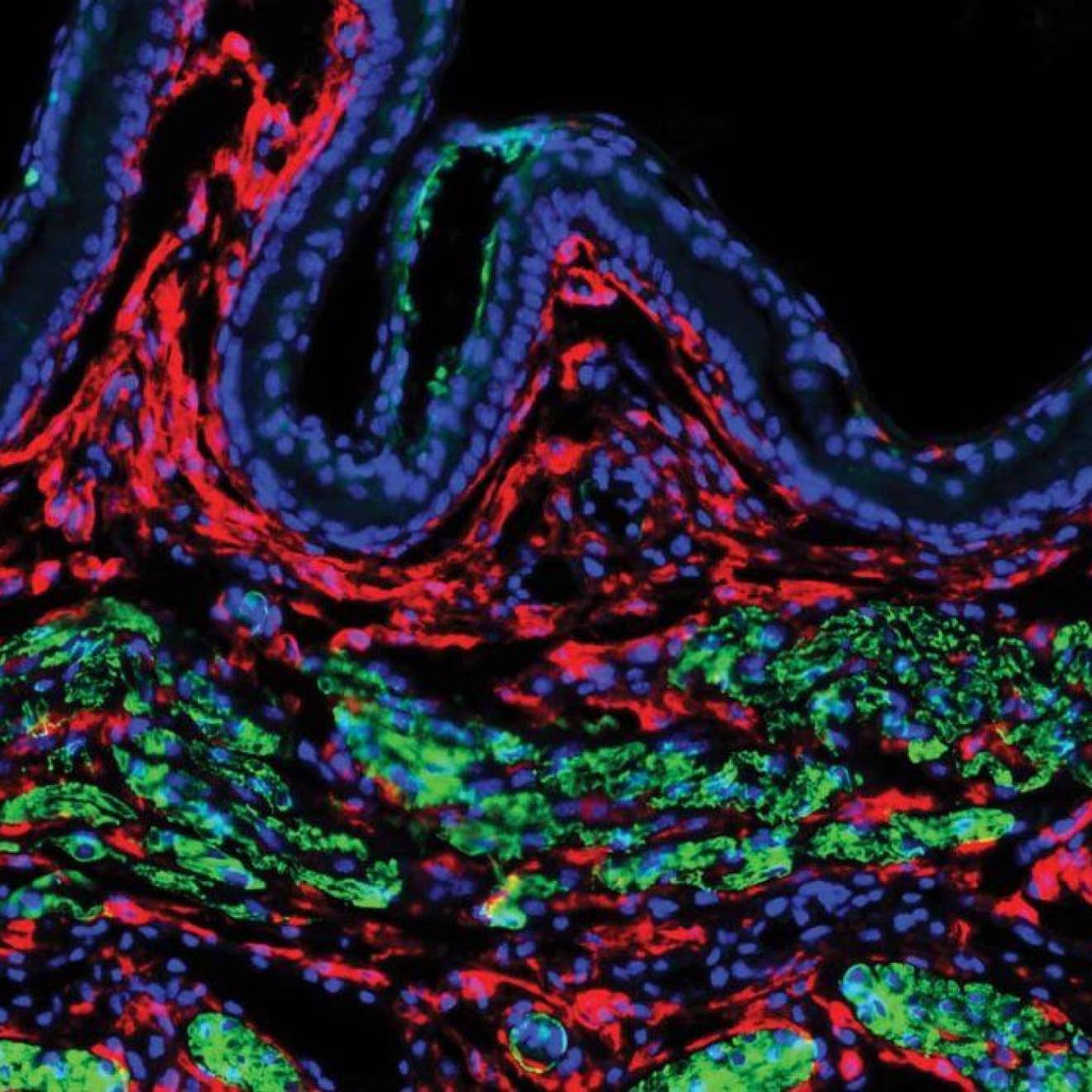Phyllis Brown, UC Davis
The very earliest signs of a debilitating neurodegenerative disorder, in which physical symptoms are not apparent until the fifth decade of life, are detectable in individuals as young as 30 years old using a new, sophisticated type of neuroimaging, researchers at UC Davis, the University of Illinois and UCLA have found.
People with the condition — fragile X-associated tremor/ataxia syndrome (FXTAS) — experience tremors, poor balance, cognitive impairments and Parkinsonism. The genetic condition results from a mutation in the fragile X mental retardation gene (FMR1). FXTAS develops in about 40 percent of male and 15 percent of female carriers of the mutated FMR1 gene.
“Our findings suggest that the brain abnormalities of FXTAS may begin to develop about two decades before symptoms might occur,” said Tony J. Simon, study senior author and professor, Department of Psychiatry and Behavioral Sciences.
“Altered Structural Brain Connectome in Young Adult Fragile X Premutation Carriers,” is published in Human Brain Mapping.
The study included 88 participants, between age 20 and 40. Of these, 46 were symptomless carriers of the FMR1 gene mutation (fXPCs). They were matched by age and gender with 42 healthy individuals without the gene mutation. IQ test results did not differ between the fXPCs and controls.
In males, it found a correlation between the efficiency of a healthy male carrier’s brain network and the extent of his gene mutation. The correlation may prove to be an effective marker of early brain aging in neurologically symptomless fXPCs. The study also revealed that the volume of the brain stem is smaller in male fXPCS than in male controls.
In a novel finding, among the female participants, researchers detected volume differences in several brain areas of female fXPCs and female controls.
“These suggest the presence of compensatory mechanisms in neurologically symptomless females but not in similar male carriers of the gene mutation,” said Simon, a researcher affiliated with the UC Davis MIND Institute.
Despite the absence of any clinical symptoms of FXTAS, the male and female gene mutation carriers performed significantly worse in several tests when compared to unaffected controls, Simon said.
“Given the lower risk for FXTAS or related neurological symptoms in female fXPCs, we were surprised to find such differences when their minds and brains were compared with those of the unaffected female controls,” he said.
Both groups were evaluated by cognitive testing as well as novel neuroimaging techniques termed “brain connectomics,” based on diffusion tensor imaging (DTI) whole-brain tractography. A connectome is a comprehensive map, like a wiring diagram, of neural connections in the brain. The methods used were partly developed by study first author Alex Leow of the University of Illinois, Chicago. The investigation is the first-ever connectome study using DTI-whole brain tractography to compare fXPCs and controls.
The technology allowed Simon and his collaborators to conduct a system-wide investigation of the connections between the brain’s grey matter, which is involved in movement control, sensory perception, memory, emotions, speech, decision-making and self-control, and the white matter structures that transmit the signals that underlie these actions and behaviors.
The study suggests that combining analyses of cognitive function, clinical data and connectome patterns in premutationcarriers may be more effective ways to characterize an individual’s underlying brain pathophysiology, and possibly assessing risks for later degeneration,than is possible using current methods.
In addition to FXTAS, the fragile X-associated disorders include fragile X syndrome, the most common form of intellectual disability in children, and fragile X-associated primary ovarian insufficiency (FXPOI).
“Identifying these brain changes when the individuals who carry the gene mutation are young is important, becausethere are medical interventions that can help them avoid or reduce their symptoms,” said MIND Institute Medical Director Randi Hagerman, an internationally respected researcher in the field of fragile X-related disorders.
Other study authors include Susan Rivera, Danielle Harvey and Naomi Goodrich-Hunsaker of UC Davis; Johnson Gadelkarim, Anand Kumar and Alex Leow of the University of Illinois at Chicago; and Liang Zhan of UCLA.
This work was supported by National Institute of Health (NIH) grants: NIA RL1 AG032119, NINDS RL1 NS062412, and NIDA TL1 DA024854. This work was also made possible by a Roadmap Initiative grant (UL1 DE019583) from the National Institute of Dental and CraniofacialResearch (NIDCR) in support of the NeuroTherapeutics Research Institute (NTRI) consortium.

